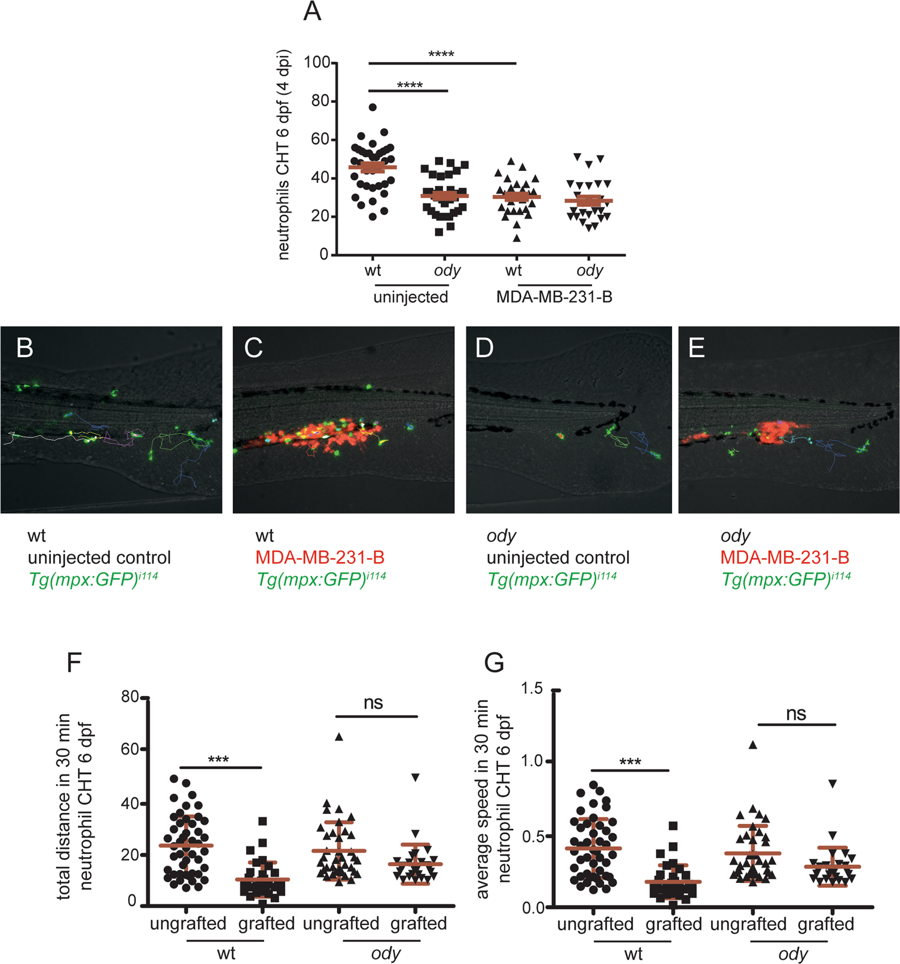Fig. 6
cxcr4b loss of function influences neutrophil response to cancer cells initiating early metastases. (A) Neutrophil response to metastatic cancer cells was assessed by measuring neutrophil number in the CHT in wt and ody larvae at 4 dpi (6 dpf). In control conditions, neutrophils left the CHT when tumor cells were present, whereas they failed to respond, remaining in the CHT, in ody mutants (B). Kruskal-Wallis, with Dunn post hoc test **** p < 0.0001 (number of uninjected embryos is the same as in graph in Fig. 4F; number of engrafted embryos is wt: n = 29 and ody: n = 25). Images were acquired using Leica MZ16FA fluorescent microscope coupled to a DFC420C camera. Scale bars: 50 µm. (B,C) Neutrophil tracking in 6 dpf larvae showed stationary behavior of neutrophils in the presence of tumor cells in wt siblings compared to uninjected controls. (D,E) Neutrophils maintained the same migratory behavior in odymutants, in presence of MDA-MB-231-B and in uninjected larvae. (F,G) Neutrophil motility was quantified for 30 minutes, measuring total distance and average speed of each neutrophil in the CHT region. Data are mean ± SD (uninjected wt: n = 46 tracks from 7 larvae; MDA-MB-231-B wt: n = 32 tracks from 5 larvae; uninjected ody: n = 37 tracks from 7 larvae; MDA-MB-231-B ody: n = 27 tracks from 5 larvae). One-way ANOVA, with Bonferroni post-hoc test.

